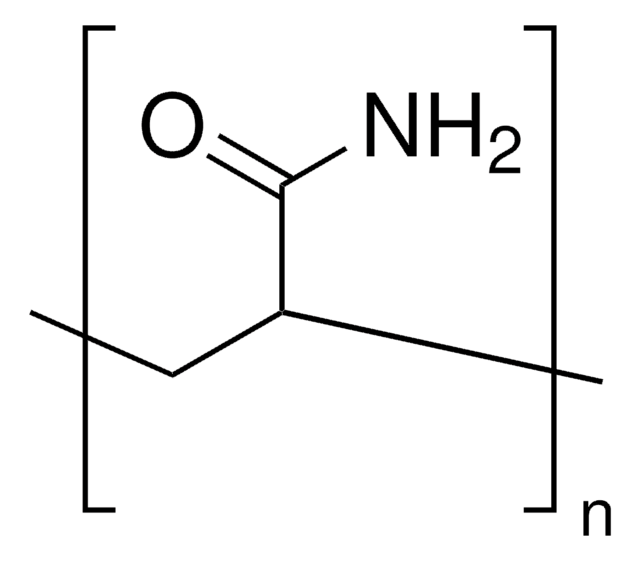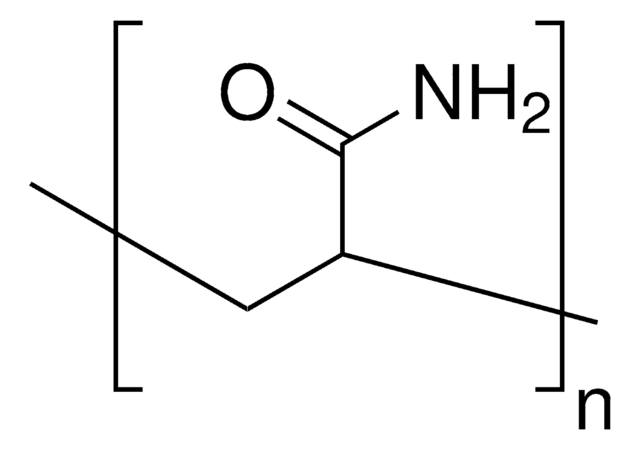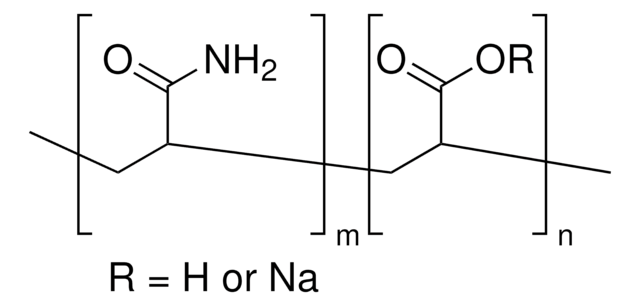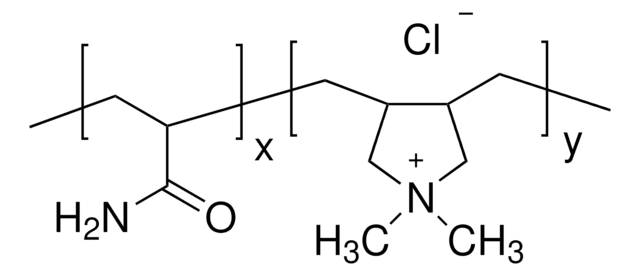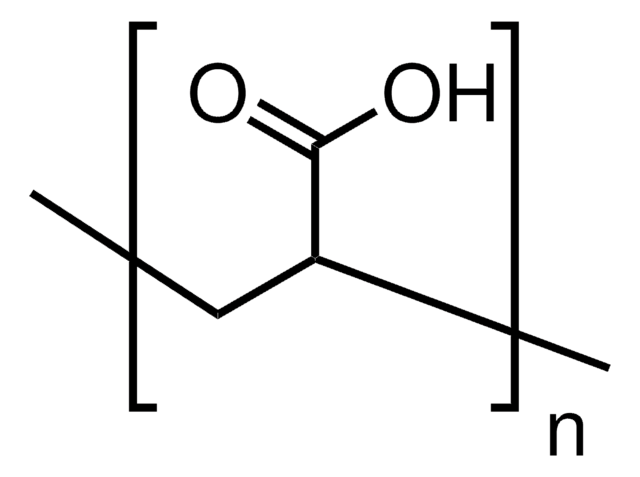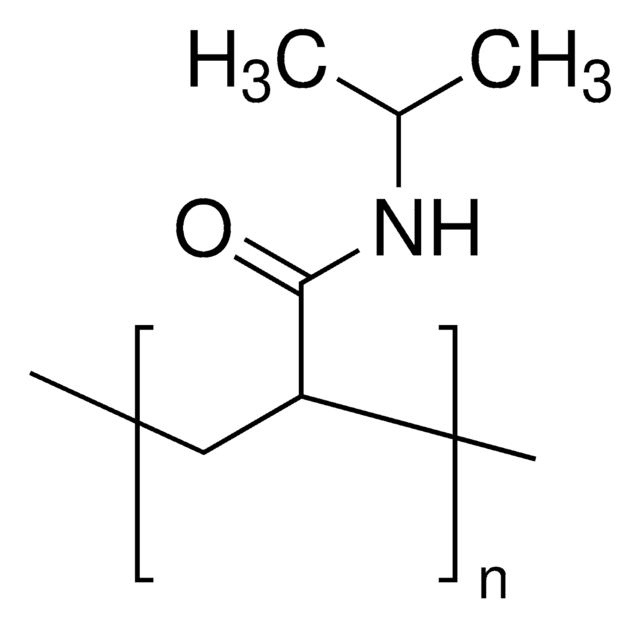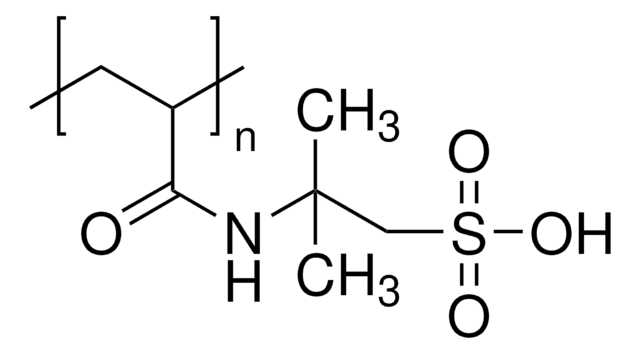Kluczowe dokumenty
749222
Polyacrylamide
average Mn 150,000
Synonim(y):
PAM
About This Item
Polecane produkty
Formularz
solid
Poziom jakości
masa cząsteczkowa
average Mn 150,000
mp
>200 °C
InChI
1S/C3H5NO/c1-2-3(4)5/h2H,1H2,(H2,4,5)
Klucz InChI
HRPVXLWXLXDGHG-UHFFFAOYSA-N
Szukasz podobnych produktów? Odwiedź Przewodnik dotyczący porównywania produktów
Zastosowanie
- The influence of swelling on elastic properties of polyacrylamide hydrogels: Studies how swelling influences the mechanical properties of polyacrylamide hydrogels, relevant for biomaterials research and development (R Subramani et al., 2020).
- Basics and recent advances of two dimensional-polyacrylamide gel electrophoresis: Reviews advancements in gel-based proteomics using polyacrylamide gel electrophoresis, essential for protein separation techniques in biochemical research (S Magdeldin et al., 2014).
- Polyacrylamide gel electrophoresis: Provides comprehensive guidelines on using polyacrylamide gel electrophoresis for molecular biology applications, including its role in genotyping and molecular diagnostics (MR Green, J Sambrook, 2020).
Kod klasy składowania
11 - Combustible Solids
Klasa zagrożenia wodnego (WGK)
WGK 2
Temperatura zapłonu (°F)
Not applicable
Temperatura zapłonu (°C)
Not applicable
Wybierz jedną z najnowszych wersji:
Masz już ten produkt?
Dokumenty związane z niedawno zakupionymi produktami zostały zamieszczone w Bibliotece dokumentów.
Klienci oglądali również te produkty
Produkty
Collagen molecules play a critical role in tissue architecture and strength, and in cell-matrix interactions as insoluble ligands to regulate the diverse phenotypic activities of cells.
Highlighting existing and novel fabrication methods for both, solid and hydrogel-based scaffold for tissue engineering applications.
Nasz zespół naukowców ma doświadczenie we wszystkich obszarach badań, w tym w naukach przyrodniczych, materiałoznawstwie, syntezie chemicznej, chromatografii, analityce i wielu innych dziedzinach.
Skontaktuj się z zespołem ds. pomocy technicznej